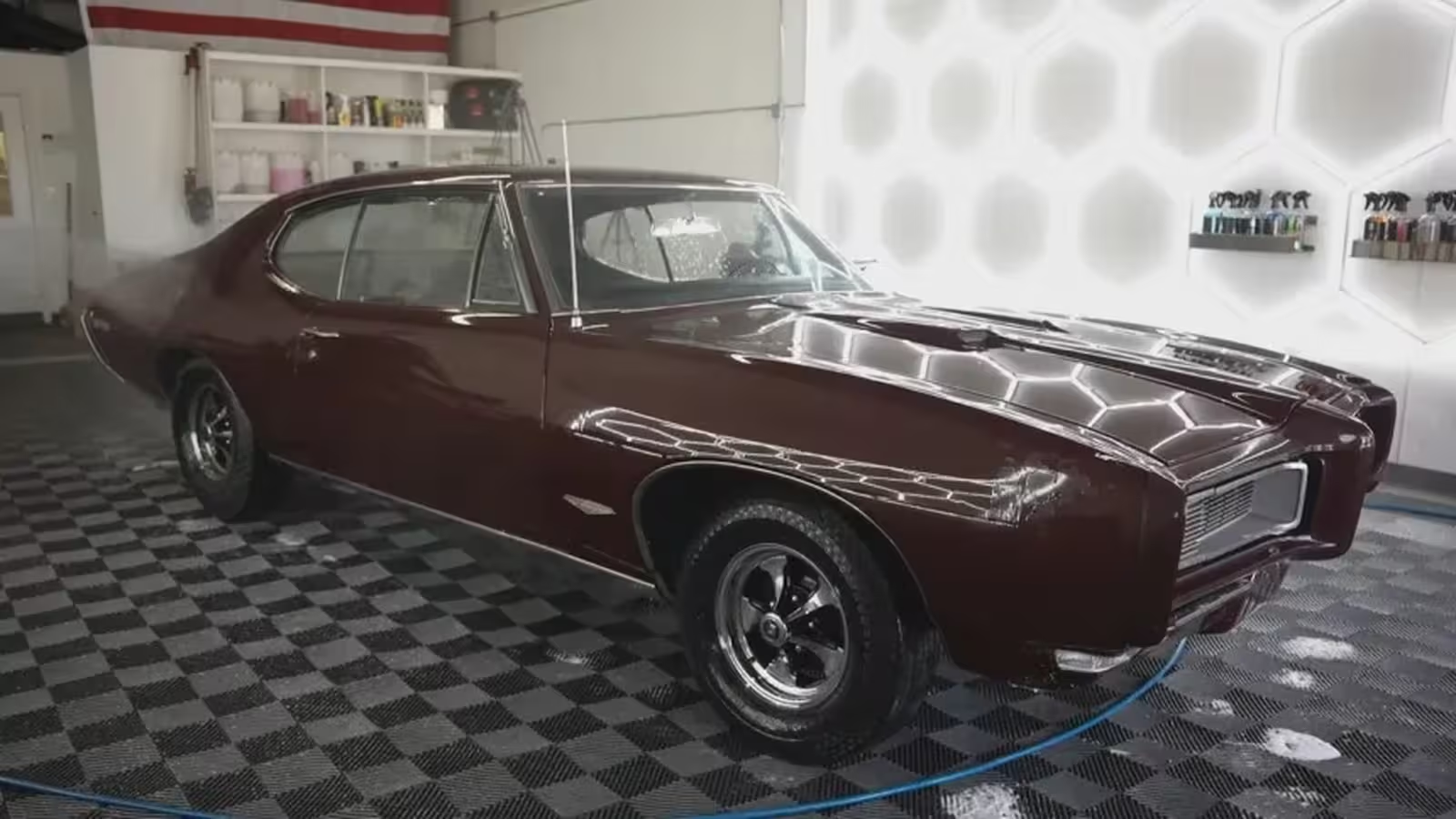6 Minutes
The Rise of Pontiac in the Muscle Car Era
The 1960s were an iconic period for the American auto industry, with Pontiac standing tall as one of General Motors’ shining stars. For most of that decade, Pontiac consistently ranked third among U.S. automakers, peaking in 1968 with a remarkable 900,000 vehicles sold. The Pontiac GTO, often hailed as the world’s first true muscle car, played a pivotal role in cementing the brand’s legendary status—even as it faced fierce competition and shifting market trends.
1968 GTO: A Transformative Year for an American Icon
The 1968 Pontiac GTO marked the apex of innovation and muscular design, boasting nearly 87,700 units delivered—just behind its all-time sales high set in 1966. The GTO’s dynamic restyling for the '68 model year featured a sleeker body, hidden headlights, and aggressive lines that set it apart from its muscle-bound contenders like the Dodge Charger, Plymouth Road Runner, and Ford Torino. Though the competition was intense, the 1968 GTO not only held its ground but managed to increase its annual sales by some 6,000 units over the previous year.
The Forgotten Legend: A 19,000-Mile GTO Sheltered Since the 1970s
Among the thousands of GTOs shipped in 1968, two landed at Llewellyn Pontiac in Lorain, Ohio. One of those GTOs would go on to become a striking survivor story—a Flambeau Burgundy GTO with a mere 19,000 miles, meticulously preserved, yet all but forgotten in a garage for nearly five decades.
Love, Loss, and Automotive Hibernation
The GTO’s journey is not just a tale of horsepower, but also one of heartbreak. Purchased new in 1968 by a passionate enthusiast, the car’s second owner acquired it five years later, drawn specifically to its rare front bench seat—a feature vital for enjoying car rides with his beloved girlfriend. Tragically, when their relationship ended, the pain was so profound that he couldn’t bear to look at the car, let alone drive it. His heartbreak led to the GTO being locked away, untouched, a collateral victim of love lost.
Documented Memories: A Glovebox Time Capsule
When automotive detailers eventually explored the car’s glovebox, they discovered meticulous records: every outing, mileage, date—chronicled during five years of joyful ownership. These personal logs capture a unique intersection of motoring passion and personal history, making this GTO much more than just a classic car.
A Second Chance for a Muscle Car Classic
Decades later, the silent years came to an end when the original owner’s brother, having safeguarded the GTO into the mid-2020s, finally decided the legend deserved a new chapter. The car’s rescue and revival drew attention from car collectors and enthusiasts worldwide. WD Detailing, a respected Cleveland shop known for restoring heavily neglected classics, was called in. While a thick layer of undisturbed dust coated the exterior, the interior looked astonishingly new—as if time had stood still inside the cabin.
Pristine Preservation: Condition and Details
The car required only light cosmetic care: a careful wash, some refreshing shampoos, and gentle cleaning of the interior and chrome. Remarkably, the passenger compartment was spotless, untouched by the passage of time. No one had ever even sat in the back seat, making the GTO’s interior an authentic time capsule. The exterior, beneath its decades-old dust, required little more than professional detailing to recapture its original luster.
Original Tires, Unmolested Mechanicals
The authenticity extended to the car’s rolling stock—the original tires, unchanged since the 1970s, showed just how little the GTO had moved over the years. Despite spending much of the last decade parked in two different protected locations, the tires had eventually locked in place, requiring extra muscle to free the car from its garage. Yet, this careful storage spared the vehicle from rust, rot, or mechanical neglect.
Engineering and Performance: Unleashing the GTO’s Muscle
Beneath the hood, this survivor is powered by Pontiac’s renowned 400-cubic inch V8 engine with a four-barrel carburetor—an option chosen by more than 64,500 buyers in 1968. Generating a potent 350 horsepower and 445 lb-ft of torque, this fire-breathing powerplant was paired, in this case, with a rare Hurst T-handle four-speed manual transmission—one of only about 25,000 to leave the factory with this sought-after setup. The radio was the only other notable optional extra, underscoring the GTO’s purist muscle car credentials.
Design and Market Comparison
The 1968 GTO’s competition from the Dodge Charger, Plymouth Road Runner, and Ford Torino highlighted the explosive popularity of muscle cars during this era. While all these challengers brought power and swagger to the street, few matched the GTO’s balanced blend of brute force, sharp design, and day-to-day usability. The fresh design overhaul for 1968 gave Pontiac’s mid-size muscle car an edge, with a more modern, aerodynamic profile that many enthusiasts regard as the GTO’s most memorable look.
Legacy and Collector Value: Why This GTO Is Truly Unique
The Pontiac GTO has always been a symbol of American muscle, but this particular Flambeau Burgundy example stands apart. Its untouched interior, original documentation, and almost mythical backstory add significant value in the eyes of collectors and muscle car enthusiasts globally. Most notably, no one ever sat in the back seat—a testament to its unique preservation and the care it received, despite the emotional circumstances of its abandonment.
A New Lease on Life
With its latest caretaker being a seasoned American classic collector, plans are underway for a comprehensive engine overhaul and gentle mechanical restoration. Whether the car returns to regular use or remains a cherished museum piece, one thing is clear: the GTO deserves to thunder down the road, showcasing the raw V8 roar that defined a generation.
Conclusion: The Timeless Allure of a Survivor Muscle Car
Stories like this remind us why classic muscle cars continue to fascinate generations. The 1968 Pontiac GTO is more than sheet metal and horsepower; it’s a living relic of a transformative era for American automobiles. Its tale of love, loss, and eventual rebirth perfectly illustrates how iconic vehicles don't just shape automotive history—they become part of our personal stories.
If you’re passionate about muscle cars or searching for the next centerpiece of your classic car collection, the story of this 19,000-mile 1968 Pontiac GTO demonstrates just how valuable and meaningful these legends can be. For those who appreciate originality, provenance, and the emotional journeys intertwined with automotive history, this untouched survivor is nothing short of a dream come true.
Source: autoevolution



Comments